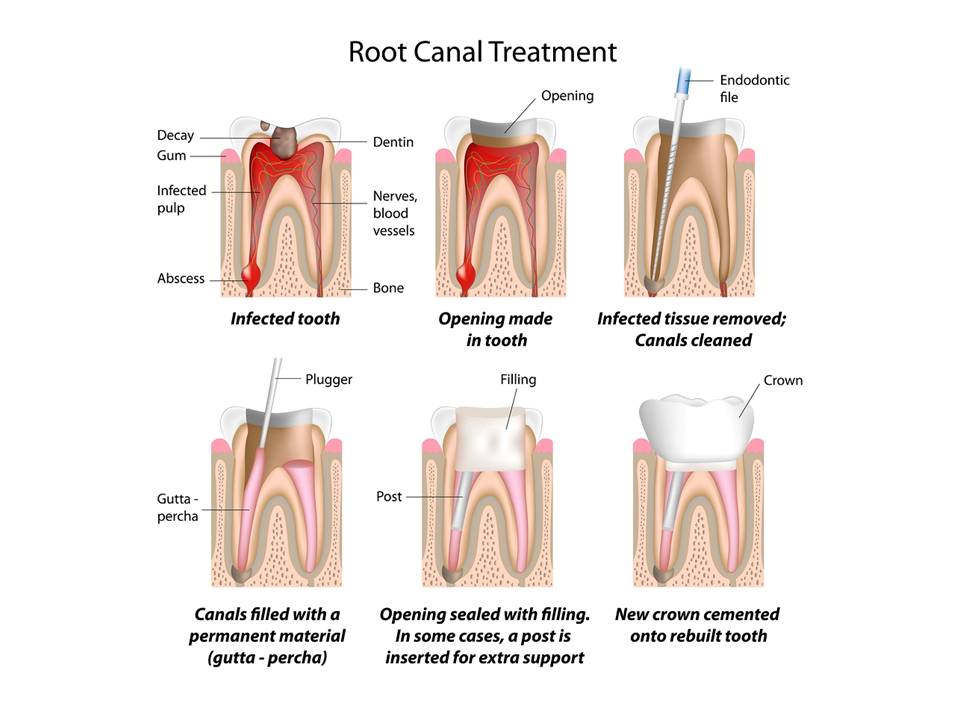Service - Root Canal Therapy
 THE GOAL: PRESERVING THE TOOTH
THE GOAL: PRESERVING THE TOOTH
In the past, injured or diseased teeth frequently had to be removed. Today, they can often be saved through endodontic treatment. Also known as root canal treatment, this procedure has acquired a bad reputation and is often synonymous with pain. However, this is a myth. Root canal treatment can be a painless procedure that will help to ensure continued use of your tooth for many years to come.
PULP PARTICULARS
Root canal treatment generally involves the removal and replacement of a tooth’s pulp. The pulp is soft tissue on the very inside of a tooth and contains blood vessels, nerves, and connective tissue. The pulp is found in a canal that runs through the center of the hard tissue on the inside of the tooth. The pulp extends from the pulp chamber in the crown of the tooth through the root canal system to the tip of the root in the jawbone. A tooth has only one pulp chamber but may have more than one root and therefore several root canals.
If the pulp becomes damaged through injury or disease (i.e. a large cavity) and cannot heal itself, then bacteria and their products can leak into the pulp and cause it to die. If a root canal procedure is not performed an abscess can form at the tip of the root in the jawbone and cause considerable pain. Even if there is no pain, the bone anchoring the tooth in the jaw can be damaged. Without treatment the tooth may have to be extracted.
WHAT TO EXPECT
Here is what you can expect when you schedule a root canal treatment. On the initial visit, local anesthetic is given to maintain patient comfort. The affected tooth is isolated from saliva with a rubberlike sheet called a dam. An opening is made through the crown of the tooth. The pulp is removed and then the root is cleaned and shaped. Oftentimes, a root canal can be completed in just one visit. However, sometimes it is necessary to add medication to the pulp chamber and root canal(s) to help eliminate bacteria. If this is needed, a temporary filling is placed in the crown opening to keep saliva and new bacteria out. Antibiotics may be prescribed if an infection is present and has spread beyond the end of the root(s).
On a subsequent visit, the temporary filling is removed. The root canal is filled and permanently sealed (a metal or plastic post may be placed in the root canal for structural support). For teeth in the back of the mouth (molars and premolars) the tooth must be prepared for a crown to help strengthen and reinforce the tooth. Crowns are made from a variety of materials depending on the location of the tooth in your mouth, the color of the tooth, and the amount of natural tooth remaining.
THE REST IS UP TO YOU
The restored tooth can remain healthy as long as its roots are nourished by the surrounding tissues. Good oral hygiene at home and regular dental visits can help prevent tooth decay and gum disease. If you take good care of it the restored tooth could last a lifetime.
If you have any questions or would like further information please contact our office at any time.







 Web Design by Sleepless Media
Web Design by Sleepless Media